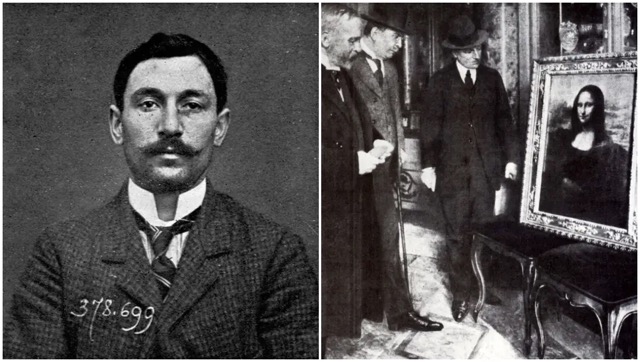One of the most famous paintings in the world, the Mona Lisa, was stolen from the Louvre in France. Painted by Leonardo da Vinci in the early 1500s, it was acquired by King François I of France after Leonardo moved to the Loire Valley in 1516. After the French Revolution in the late 18th century, the painting was placed in the Louvre.
The perpetrator of the theft had previously worked as a Louvre employee, cleaning and reframing paintings. Vincenzo Peruggia, an Italian who had moved to Paris in 1908, later described how he had followed Louvre workers into their entrance at 7 a.m. while wearing his white smock. After taking the painting from the wall unnoticed, he went to a service stairway by the Salle des Sept-Mètres in the Louvre and removed the frame. Contrary to some reports, Peruggia did not smuggle the painting out under his smock — it was too large (and he was too short) for that. Instead, he wrapped his smock around the painting and brazenly carried it out of the museum under his arm.
The world was baffled as to who had committed such a crime. Modernist enemies of traditional art, such as the avant-garde poet and playwright Guillaume Apollinaire, were arrested and questioned. Peruggia was caught and arrested more than two years later, in November 1913, after he contacted a Florentine art dealer, Alfredo Geri, suggesting that he bring the painting to him for a reward of 500,000 lire (about $650,000 in 2024). Peruggia’s stated motive was that he believed Napoleon had stolen the painting from Italy. (Napoleon did steal many works of art from Italy, but not the Mona Lisa, which had been in France for almost 400 years.) Many Italians saw Peruggia as a national hero and were delighted when the painting returned to Italy. Crowds flocked to see it on display in the Uffizi Gallery until it was dutifully returned to the Louvre. Peruggia spent only a brief time in prison — seven months — before being released. He died in a Paris suburb on his 44th birthday in 1925.

